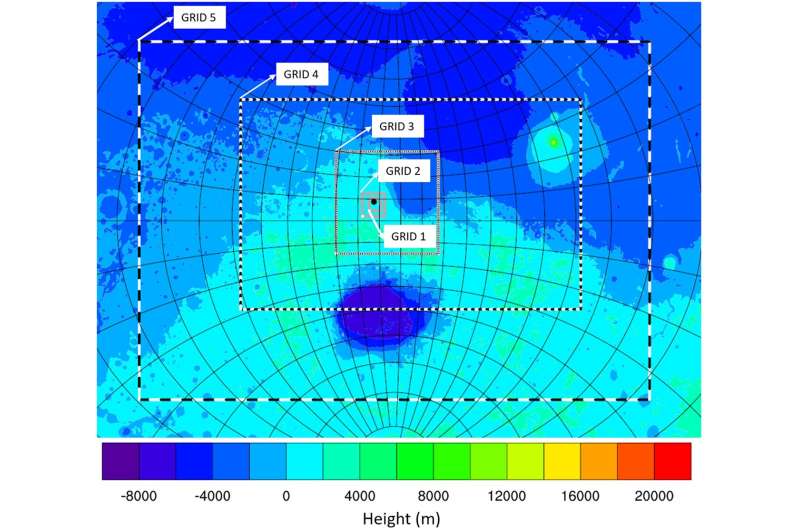CFD is a method regularly used in car design, turbomachinery, ship design, and aircraft manufacturing and has proved to be beneficial in astrophysics, biology, oceanography, oil recovery, architecture, and meteorology. It uses applied mathematics, physics and computational software to visualize how a gas or liquid flows—as well as how the gas or liquid affects objects as it flows past.
The research, led by Ph.D. student Richard Love from Ulster University, has been published in the journal PLOS ONE and follows on from previous work Dr. Smyth was involved in titled "The dune effect on sand-transporting winds on Mars" which used "fine scale" 3D computer modeling to "unravel complex airflow patterns on the planet" and "firmly identify the direction of winds passing over sand dunes on Mars" that until then had been misinterpreted.
"We used to think sand dunes on Mars were perhaps static and didn't move," said Dr. Smyth, "but as spacecraft started orbiting the planet and rovers landed on Mars, we started to notice they moved relatively quickly and Mars was in fact, actually quite dynamic."
Dr. Smyth explained how the previous research, published in Nature Communications, modeled wind flow over sand dunes using a virtual wind tunnel and mapped the wind speed to how the sand dunes were moving on the surface of Mars, which at the time they found it mapped quite well and with good accuracy.
"Fast forward seven years however, and after working closely with Richard, we have now discovered a more informed and realistic Computational Fluid Dynamics (CFD) microscale modeling method," said Dr. Smyth.
"Richard's nested modeling approach allows for a more landscape-scale understanding to be obtained on the movement of the sand dunes on Mars and could avoid situations such as placing a Rover in an area that we suddenly find out is incredibly dynamic," he added.
More information: Richard Love et al, From Macro- to Microscale: A combined modelling approach for near-surface wind flow on Mars at sub-dune length-scales, PLOS ONE (2022). DOI: 10.1371/journal.pone.0276547
Journal information:PLoS ONE, Nature Communications
Provided by University of Huddersfield



